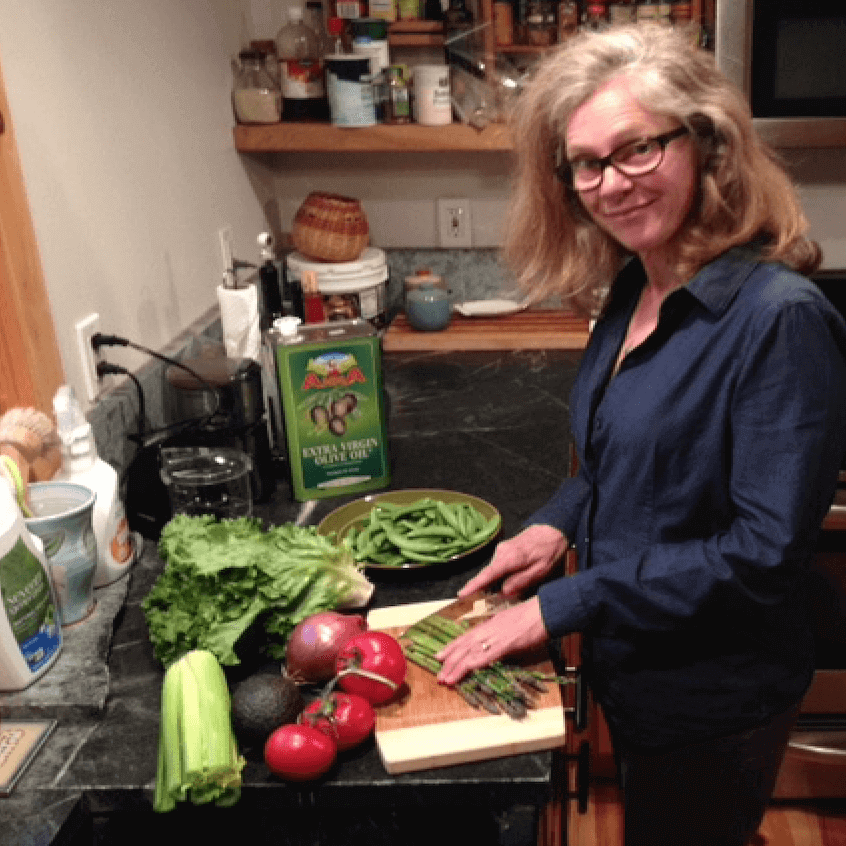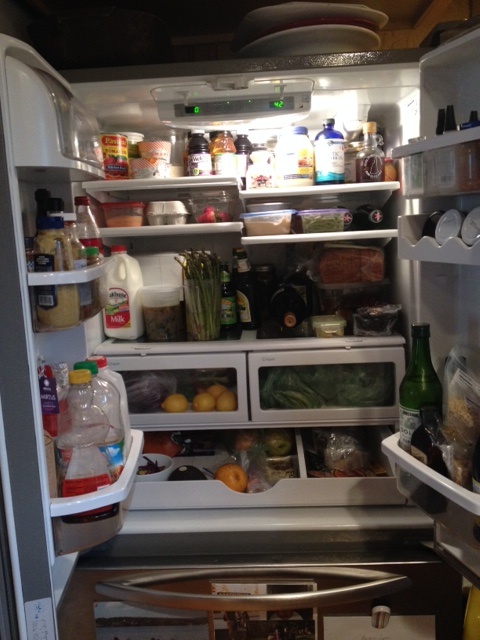I turned 50 this year and along with facing my mortality directly in the mirror, I also embarked on – along with my reluctant husband Eric – some serious financial planning. This started with scrutinizing our monthly budget. When Eric said he thought we spend too much money on food, I was frankly a little hurt.

“What?!” I pleaded, I’m the person who cooks nearly everything from scratch, who brings leftovers to work everyday, and who considers it a personal challenge to keep our food costs down, while simultaneously providing colorful, tasteful, super-healthy, superfood-inspired meals. I could go on, but you get my drift.
As a family of three, we typically spend about $100 on food per week and I thought this was pretty outstanding, especially given the fact that I shop at Whole Foods and buy a fair amount of organic food. But when I read Liz Weiss’s recent blog about shopping the freezer isle, I admit, it was incredibly revealing. “Gosh—maybe I am guilty of throwing away an unjustifiable amount of fresh food, and in so doing, contributing not only to my own financial woes, and to the crisis of world hunger, but also to a set of serious environmental problems,” I thought.

As I began to read more about food waste, I quickly grasped that it is becoming one of our nation’s top environmental concerns – and for a variety of reasons:
- Most Americans are throwing away an astounding 30 to 40 percent of their food;
- An American family of four wastes an average $1,484 worth of edible food a year;
- Fruits and vegetables represent the highest percentage of food waste in America at 52 percent, followed by seafood (50 percent).
- Americans throw away more food than paper, plastic, metal and glass.
- Growing food that never gets eaten squanders vast quantities of fuel, agricultural chemicals, water and land, needed to produce it; and finally,
- Rotting food that ends up in landfills releases dangerous methane, which is at least 20 times more lethal than carbon monoxide.
Needless to say, all of these facts – and many more – have sent me back to the drawing board of my food buying habits. From what I have learned, it now seems unambiguous that one of the most obvious ways I can reduce my food waste is to examine my fresh food habits and spend more time shopping the freezer isle. Frozen fresh Wild Blueberries, Frozen Brussels Sprouts, Frozen Spinach and Kale and, yes, even Frozen Haricots Verts (my newfound favorite from Trader Joes) are all perfectly delicious, nutritionally sound, and environmentally respectable choices.

As someone who is passionate about local fresh fresh food and who participates in a local CSA, I won’t promise to buy frozen foods year round, but I can certainly do so when it makes sense. In some cases —Wild Blueberries, for example—buying frozen is the only logical choice. These delicious little fruits come into ripeness only once a year – in August – and are harvested at the peak of ripeness. Fresh Wild Blueberries are only available in the summer and only in close proximity to where they grow in Maine and Eastern Canada, so buying them frozen and keeping them available in your freezer year round makes good common sense.
Now that I am buying more food from the freezer isle, I am noticing a whole lot less food waste (compost) at home. And, as Liz Weiss promised, I’m also spending less time in the kitchen chopping, culling and cleaning all of those fresh veggies.
My husband is happy, our budget has been favorably adjusted, the food we aren’t wasting is available for others, and our awareness about the effects of food waste just took a quantum leap forward.
On this Earth Day, let’s all think about our own impact on this beautiful planet of ours. Let’s share the message about food waste in our communities and start to solve this senseless problem for the planet. Here are some useful techniques for reducing your food waste:
- Make shopping lists and plan ahead
- Reduce the number of impulse buys at the market
- Buy only what you need; (resist the 2 for 1 offers)
- Don’t be lured into buying larger quantities
- If you do buy too much, try freezing some of the ingredients before they go bad
- And remember to shop the frozen aisle.
A large number of websites and articles are devoted to the topic of food waste. Here are a few websites and articles I particularly liked. Share them this Earth Day and spread the word….
End Food Waste Now
American Wasteland
Think Eat Save
World Food Day
New York Times
http://well.blogs.nytimes.com/2010/11/01/from-farm-to-fridge-to-garbage-can/
National Geographic
World Resources Institute




















